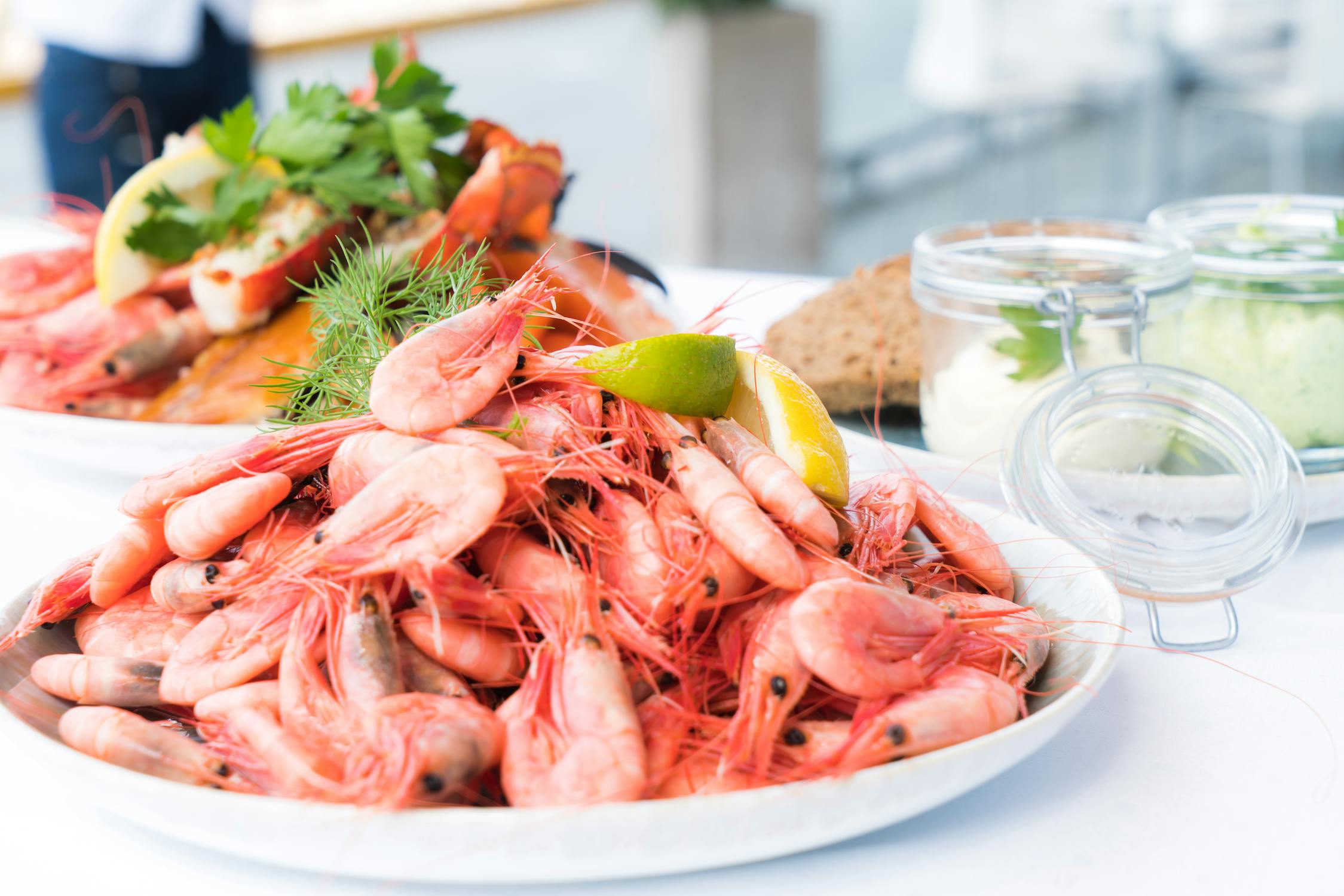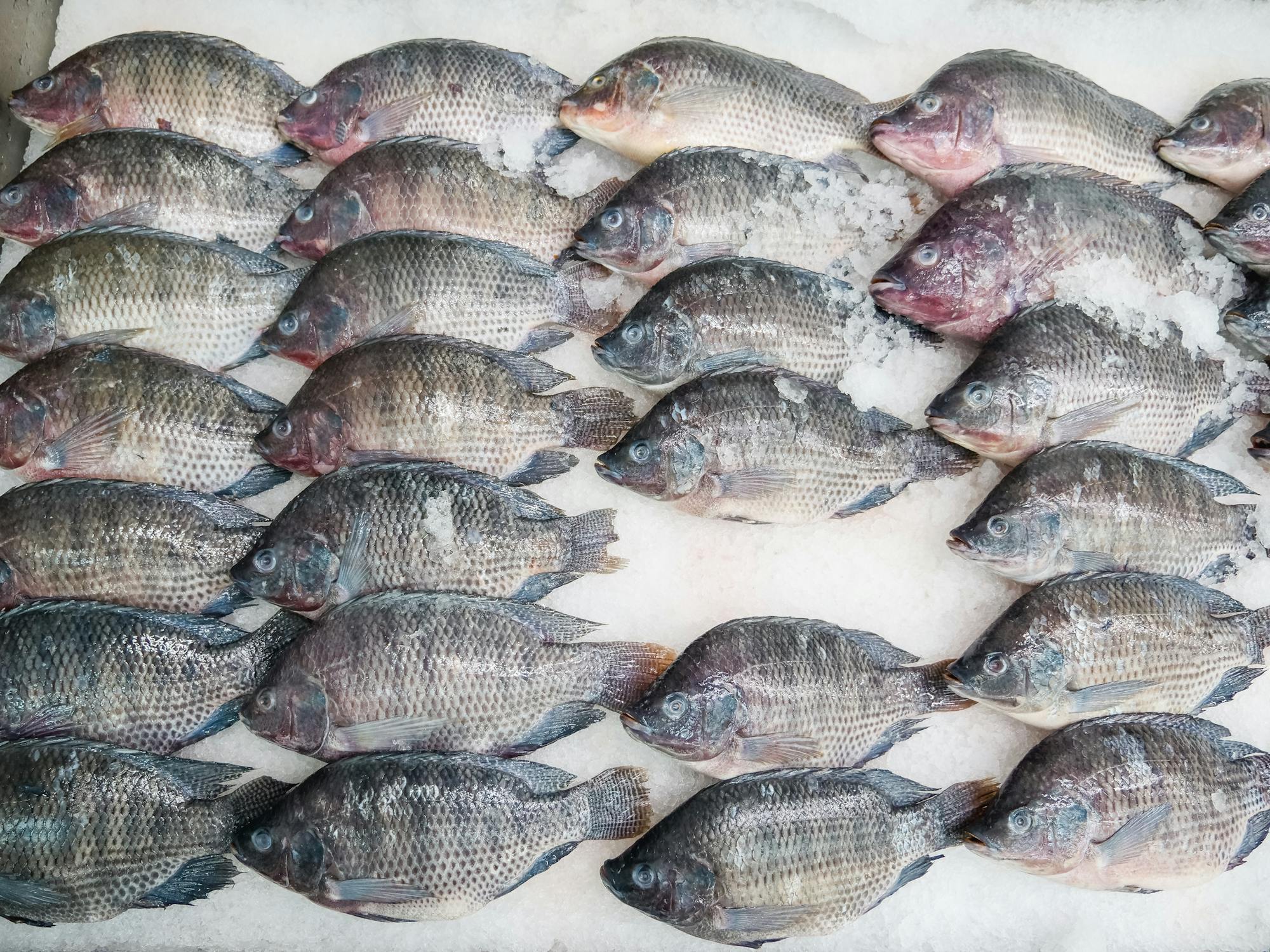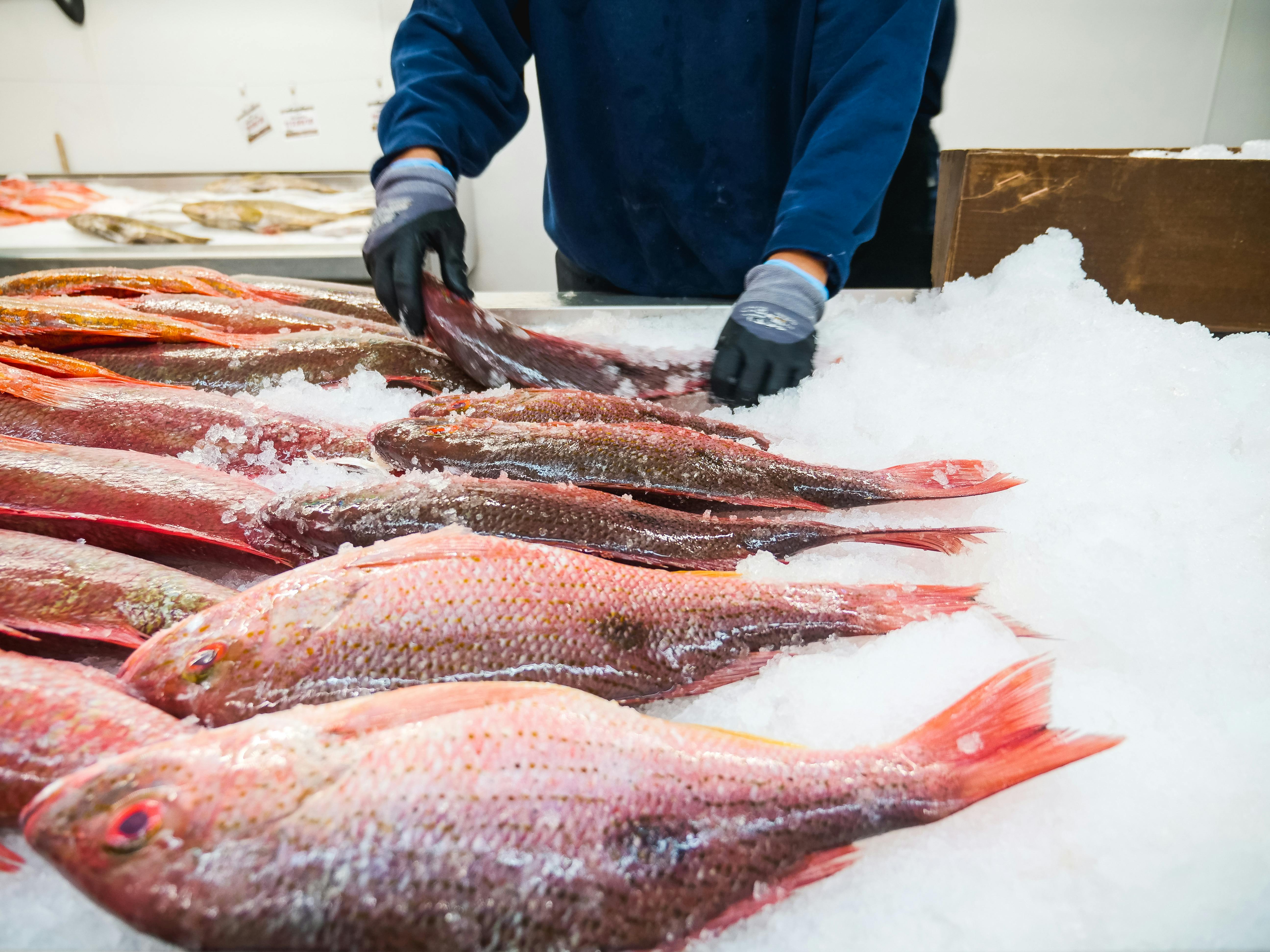Seafood can be a delicious and healthy choice, but not all options are created equal. Some fish and shellfish come with hidden risks, from sustainability concerns to high mercury levels and questionable farming practices. If you love seafood but want to make smarter choices, it’s worth knowing which ones to avoid or eat in moderation. Overfishing threatens the environment, while toxins in some seafood can harm your health. Whether it’s due to ethical concerns, potential contamination, or just plain bad farming methods, here are some seafoods you might want to think twice about before adding to your plate.
1. Imported Shrimp

Shrimp is a staple in many diets, but imported shrimp—especially from countries like Thailand, Vietnam, and India—often comes with baggage. Many overseas shrimp farms rely on antibiotics banned in the U.S., and overcrowded conditions lead to disease outbreaks and contamination. On top of that, the industry has caused serious environmental destruction, including wiping out mangrove forests that are crucial for coastal ecosystems. There are also ethical concerns, as reports have uncovered forced labor and exploitative working conditions in some shrimp-producing regions. If you love shrimp, opt for wild-caught U.S. varieties or responsibly farmed shrimp certified by organizations like the Aquaculture Stewardship Council. A little label-checking can go a long way in making a better choice for your health, the environment, and the people behind your seafood.
2. King Mackerel

Mackerel provides heart-healthy omega-3s, but King Mackerel contains some of the highest mercury levels. The FDA even recommends that children, pregnant individuals, and those nursing avoid it entirely. Mercury accumulates in the body over time and can cause neurological problems, developmental issues in children, and even cardiovascular risks in adults. Unfortunately, King Mackerel sits at the top of the food chain, meaning it absorbs mercury from smaller fish, making it an especially toxic choice. If you enjoy the rich taste of mackerel, go for the Atlantic or Pacific varieties, which have much lower mercury content. You’ll still get all the flavor and health benefits without the potential long-term risks.
3. Chilean Sea Bass

Chilean sea bass sounds fancy and tastes buttery, but it comes with a cost that goes far beyond the price tag. Overfishing has severely reduced its population, and illegal fishing in the black market accelerates its decline. This deep-sea fish also has alarmingly high mercury levels, meaning it’s not great for frequent consumption, even if you’re not in a high-risk group. Overfishing is especially concerning for Chilean sea bass because it takes years for them to mature, making it difficult for populations to recover. If you’re looking for a similar taste and texture, try black cod (also known as sablefish) instead—it’s just as rich, packed with healthy fats, and much more sustainable. Plus, you’ll be doing the oceans a favor by supporting better fishing practices.
4. Bluefin Tuna

Bluefin tuna is a sushi favorite, but it’s also one of the most overfished species in the world. The demand for it has driven populations dangerously low, and because these fish are slow-growing and highly prized, their numbers continue to dwindle. Fishermen catch many Bluefin before they can reproduce, making it incredibly difficult for the species to recover. On top of that, it’s one of the highest-mercury fish out there, which poses a serious health risk when eaten frequently. If you’re craving tuna, opt for skipjack or albacore instead—they’re more sustainable, have much lower toxin levels, and still provide the same satisfying taste. Your taste buds won’t know the difference, but the ocean will certainly benefit from your choice.
5. Orange Roughy

This deep-sea fish has a few red flags that make it a poor seafood choice. First, it lives for over a hundred years, meaning it takes decades for them to mature and reproduce, which makes overfishing an even bigger problem. Because they live so long, they also accumulate a lot of mercury over their lifetime, making them one of the worst fish for frequent consumption. Third, the methods used to catch orange roughy—such as deep-sea trawling—cause severe damage to fragile marine ecosystems, including coral reefs that take centuries to recover. If you like mild white fish, consider trying Pacific cod or haddock instead—they offer a similar delicate flavor and flakiness but come with far fewer environmental and health concerns. Choosing wisely helps preserve marine life and keeps your meals cleaner.
6. Atlantic Salmon (Farmed)

Farmers often raise Atlantic salmon in conditions that promote disease, parasites, and pollution, making it a risky choice. Many farms pack fish into tight pens, leading to outbreaks of sea lice and infections that spread quickly among the fish. Due to these issues, farmers frequently treat salmon with antibiotics, which can leave traces in the fish you eat. Some farms also use artificial dyes to give the flesh that signature pink color, which would otherwise be gray due to their unnatural diet. On top of that, open-water salmon farms contribute to environmental damage, as waste and chemicals from the farms seep into natural waterways, harming local ecosystems. If you want salmon, look for wild-caught Alaskan varieties or responsibly farmed salmon from land-based systems. You’ll enjoy the same great taste without the hidden health and environmental costs.
7. Shark

Shark meat might seem like an exotic delicacy, but it’s one of the worst seafood choices for several reasons. Fishermen often catch these apex predators using methods that harm dolphins, sea turtles, and unintended fish species. Since they grow slowly and produce few offspring, their populations struggle to recover. Additionally, shark meat contains extremely high mercury levels—sometimes at concentrations that exceed safe consumption levels—posing serious health risks to humans. Shark finners catch sharks, remove their fins, and discard them back into the ocean alive, causing major population declines in shark species. If you’re looking for a firm, steak-like fish, try mahi-mahi instead—they’re more sustainable, less contaminated, and still satisfy that meaty seafood craving. Sharks play a crucial role in marine ecosystems, and keeping them off our plates helps keep ocean food chains in balance.
8. Grouper

Grouper is a favorite in restaurants and seafood markets, but it’s another fish that’s facing serious overfishing issues. Because demand is so high, some grouper species are now at risk of collapse, with illegal fishing operations making the problem worse. Adding to the concern, studies have shown that a significant amount of “grouper” sold in restaurants and markets isn’t actually grouper at all—it’s often a cheaper fish mislabeled to fetch a higher price. If you enjoy mild, flaky fish, try halibut or striped bass instead. They offer a similar taste and texture without the sustainability concerns.
9. Tilapia

Tilapia is often praised as an affordable, mild-flavored fish, but not all tilapia is created equal. In many countries, tilapia farming involves overcrowded tanks, poor water quality, and excessive antibiotic use to prevent disease outbreaks. Because tilapia are bottom-feeders, they can also absorb contaminants from their environment, making them less nutritious than other fish. Additionally, farmed tilapia has significantly lower omega-3 fatty acids than wild-caught fish, meaning it doesn’t offer the same heart-health benefits. If you want a budget-friendly white fish, choose U.S.-farmed tilapia, which follows stricter regulations, or opt for wild-caught alternatives like cod or pollock.
10. Imported Catfish

Catfish is a popular choice for its mild taste and affordability, but if it’s imported, it could come with hidden risks. Many catfish farms outside the U.S., particularly in China and Vietnam, operate under lower safety and sanitation standards. As a result, imported catfish may contain traces of banned antibiotics, chemicals, or other contaminants. Some farms even raise catfish in polluted water, further increasing the risk of exposure to harmful substances. Instead of imported varieties, choose U.S.-farmed catfish, which is held to higher quality and safety standards. Domestic catfish is a much cleaner option, and it still delivers the same delicious, flaky texture.
11. Swordfish

Swordfish is known for its meaty texture and rich flavor, but it’s also one of the highest-mercury fish available. Because swordfish are large predators, they accumulate mercury from the smaller fish they eat, leading to dangerously high levels in their flesh. Regular consumption can increase the risk of mercury poisoning, which can cause neurological damage and other health issues over time. The FDA even advises pregnant individuals and young children to avoid swordfish altogether. If you love the firm texture of swordfish, opt for mahi-mahi or Pacific halibut instead. These alternatives have much lower mercury levels while still offering a satisfying bite.
12. Eel

Eel, often served as unagi in sushi restaurants, is a delicacy—but it’s also an environmental disaster. Wild eel populations are severely overfished, and because eels take a long time to mature and reproduce, their numbers aren’t recovering fast enough. To make matters worse, most farmed eel is raised in high-waste environments with poor regulation, leading to pollution and disease outbreaks. Farmed eels also require a lot of feed, making them an inefficient and unsustainable seafood choice. If you’re a fan of the rich, savory taste of eel, consider trying farmed barramundi instead—it has a similar texture but is a far more sustainable option.
Read More: Parasitic worm populations are skyrocketing in some fish species used in sushi
13. Snapper

Snapper is a broad category of fish, but many species, especially red snapper, are dangerously overfished. High demand has led to illegal fishing practices and population declines, making it a problematic choice for sustainability. On top of that, snapper is one of the most commonly mislabeled fish in the seafood industry—meaning that when you order snapper, you might be getting a completely different species. If you love the delicate, flaky texture of snapper, consider switching to rockfish or Pacific halibut. These alternatives offer a similar taste and are much better for the environment.
14. Monkfish

Monkfish, sometimes called “poor man’s lobster,” is valued for its firm, slightly sweet flesh that resembles lobster tail. However, monkfish populations are vulnerable to overfishing, and the methods used to catch them—primarily bottom trawling—cause severe damage to marine habitats. These trawling nets drag along the ocean floor, destroying coral reefs and other important ecosystems. While monkfish is a unique seafood choice, there are better alternatives that won’t harm the environment. If you’re craving something with a similar texture, opt for sustainably sourced lobster or scallops instead. That way, you can enjoy a delicious meal without contributing to destructive fishing practices.
15. Imported Lobster

Lobster may be a luxury seafood, but imported varieties, particularly those from poorly regulated fisheries, come with environmental concerns. Some international lobster fisheries use fishing methods that unintentionally trap and harm endangered marine life, such as sea turtles and North Atlantic right whales. Additionally, illegal and unregulated lobster fishing has led to concerns about sustainability and traceability in the global market. To make a more responsible choice, opt for sustainably caught lobster from the U.S. or Canada, where regulations help protect both the species and the ocean. Alternatively, consider langostino, a smaller crustacean with a similar texture but a much smaller environmental impact.
Choose Your Seafood Wisely

Seafood can be a fantastic part of a balanced diet, but making informed choices is key to protecting your health and the environment. Overfishing, pollution, and unethical farming practices all contribute to major problems in the seafood industry, but you can help by choosing sustainable, responsibly sourced options. Opting for wild-caught, lower-mercury fish and shellfish can significantly reduce your exposure to contaminants while supporting healthy ocean ecosystems. Even small swaps—like choosing wild salmon over farmed or albacore tuna instead of Bluefin—can make a meaningful impact. The next time you’re at the seafood counter or ordering at a restaurant, take a moment to think about where your seafood comes from. A little awareness goes a long way in ensuring a future where seafood remains a delicious, sustainable, and safe option for everyone.
Read More: Probiotics May Help Detoxify Mercury in the Gut

